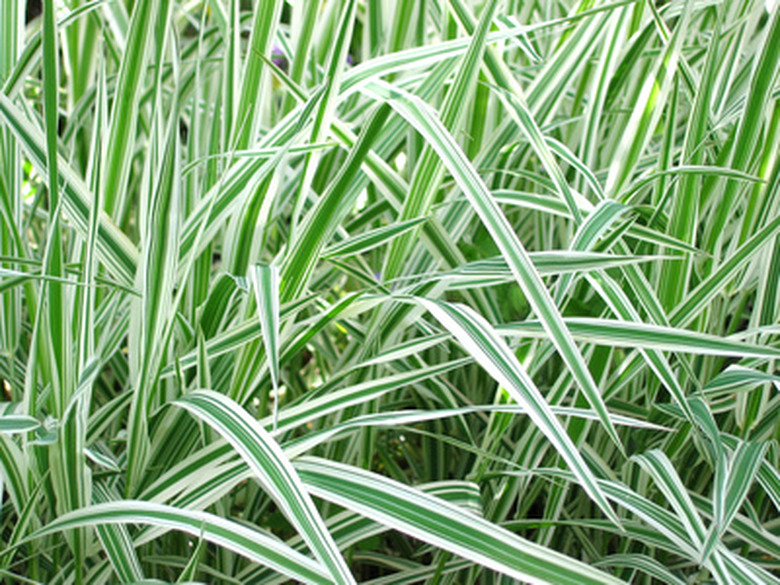Types Of Short Grass Plants
Short grass plants are landscaping multi-taskers. They bring a natural look to perennial beds and soften rock gardens and paved areas. They're solutions to the problem of concealing fading bulb plants. They make appealing—and erosion-preventing—groundcovers. Short grass plants work equally well as focal points or massed in groups. Working them into a garden design is a one-step journey to a landscape alive with texture, color, form and motion.
Purple Lovegrass
For most of the growing season, purple lovegrass (Eragrostis spectabilis) is a clump of narrow, 10-inch green leaves. Between late July and October, however, a cloud of purple-red flower clusters rises above its foliage on 12- to 14-inch stems, increasing the plant's height to 2 feet. The flowers are attractive additions to dried floral designs, notes the Missouri Botanical Garden. Spent blooms often drop from the plant, releasing seeds as they blow along the ground. Hardy to minus 20 degrees Fahrenheit, purple lovegrass is a good choice for infertile, dry well-drained soil and full sun.
- Short grass plants are landscaping multi-taskers.
Japanese Blood Grass 'Rubra'
Japanese blood grass (Imperata cylindrical), also hardy to minus 20 degrees F, is a 12- to 18-inch clumping grass with upright, one-quarter inch wide green leaves. The 'Rubra' Japanese blood grass cultivar puts on a summer display when upper half of its foliage turns red in early summer. Intensifying to, and remaining, burgundy before its winter dormancy, 'Rubra' is most impressive planted to catch backlight from early morning or late afternoon sun. This grass tolerates both sun (for best color) and partial shade, states the Missouri Botanical Garden. It likes averagely moist, well-drained soil.
Fountain Grass 'Little Honey'
Fountain grass (Pennisetum alopecuroides) 'Little Honey' is an arching grass with 6- to 12-inch foliage. This diminutive plant packs a big ornamental punch with glossy, green-and-white variegated leaves. Between August and October, notes the Missouri Botanical Garden, 'Little Honey' has greenish flower heads that develop a metallic golden sheen as they ripen. They remain on the plant into early winter. Suitable for small garden areas or containers, it makes a good border or rock garden edger. It likes moist or wet, averagely fertile soil and flowers most heavily in full sun.
- Japanese blood grass (Imperata cylindrical), also hardy to minus 20 degrees F, is a 12- to 18-inch clumping grass with upright, one-quarter inch wide green leaves.
Autumn Moor Grass
Autumn moor grass (Seslaria autumnalis) has a clump of 9- to 12-inch, narrow, yellow-green leaves. Stems of green summer flowers increase its height to 18 inches. This short grass plant is at its ornamental best in autumn, when silvery seed heads replace its spent flowers. Attractive as a large area groundcover, it handles almost any sunny or partially shady spot with dry to averagely moist, well-drained soil. While drought-tolerant, autumn moor grass suffers in high heat and humidity, according to the Missouri Botanical Garden.
